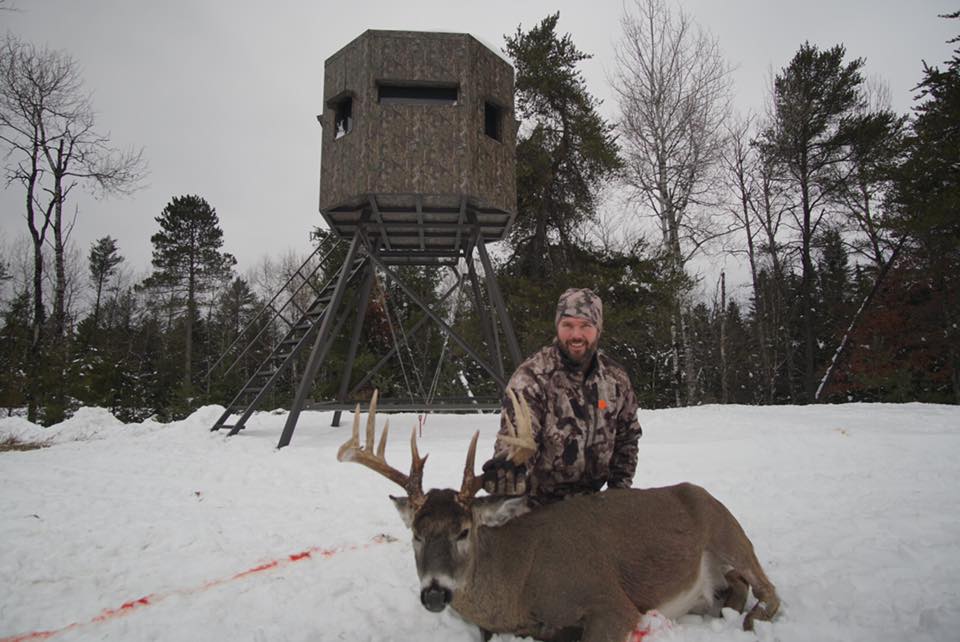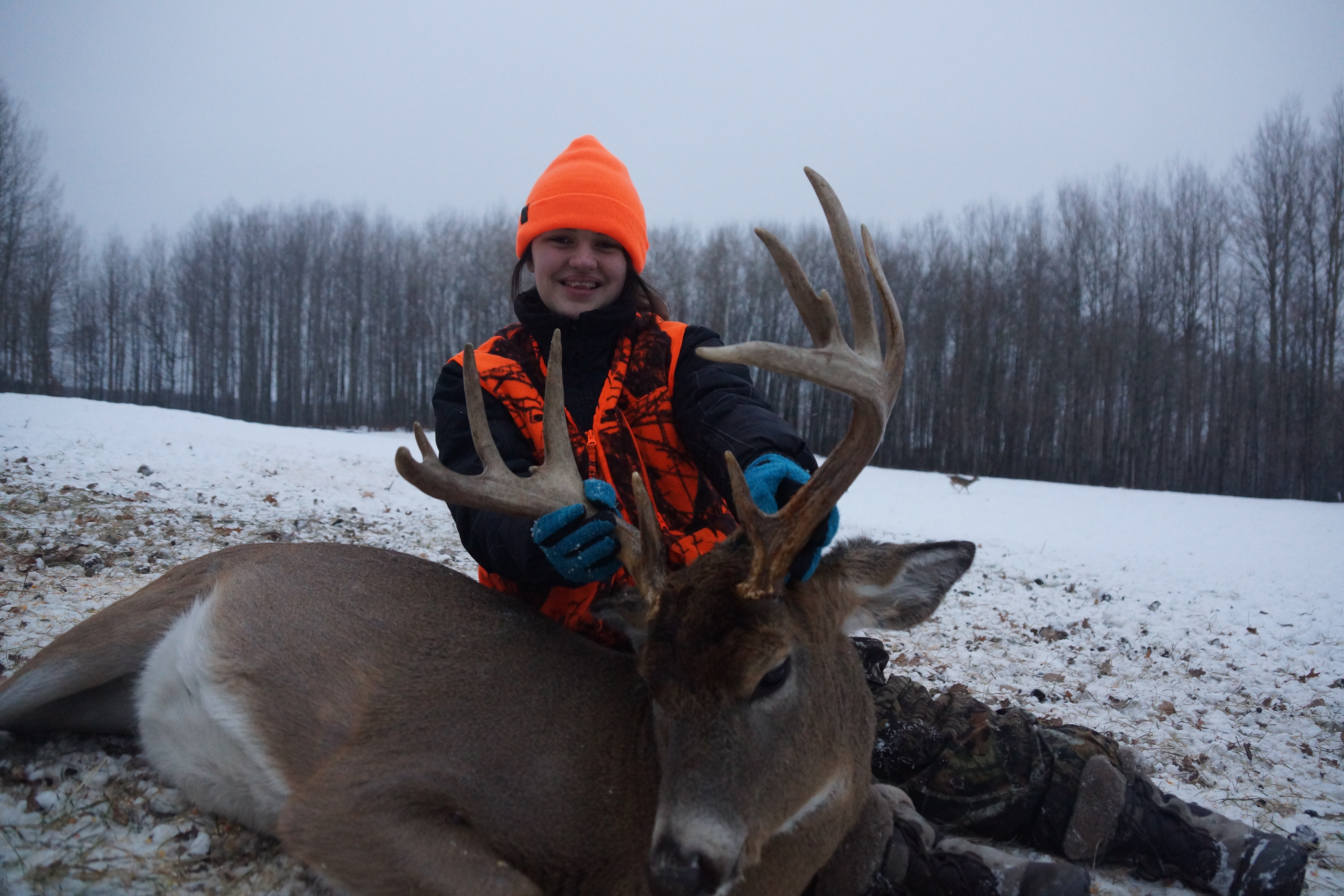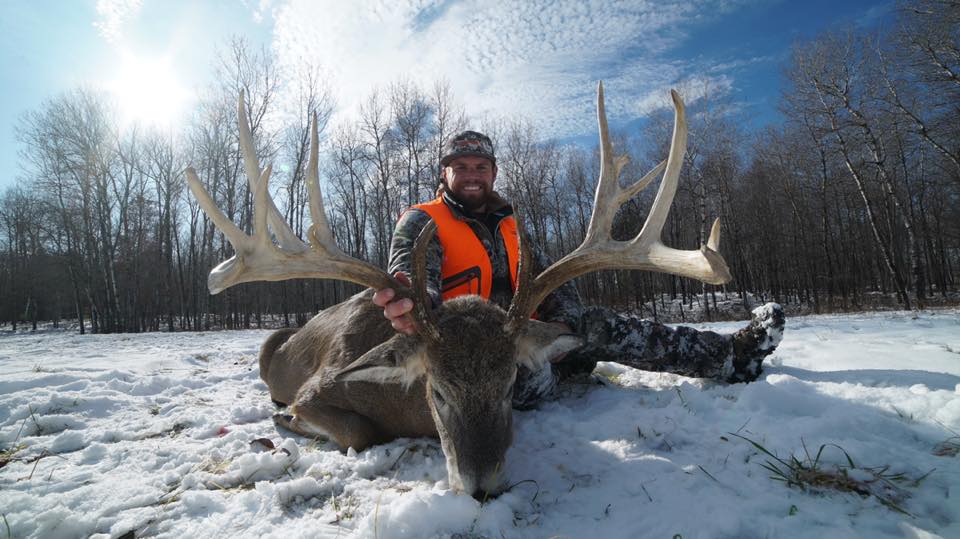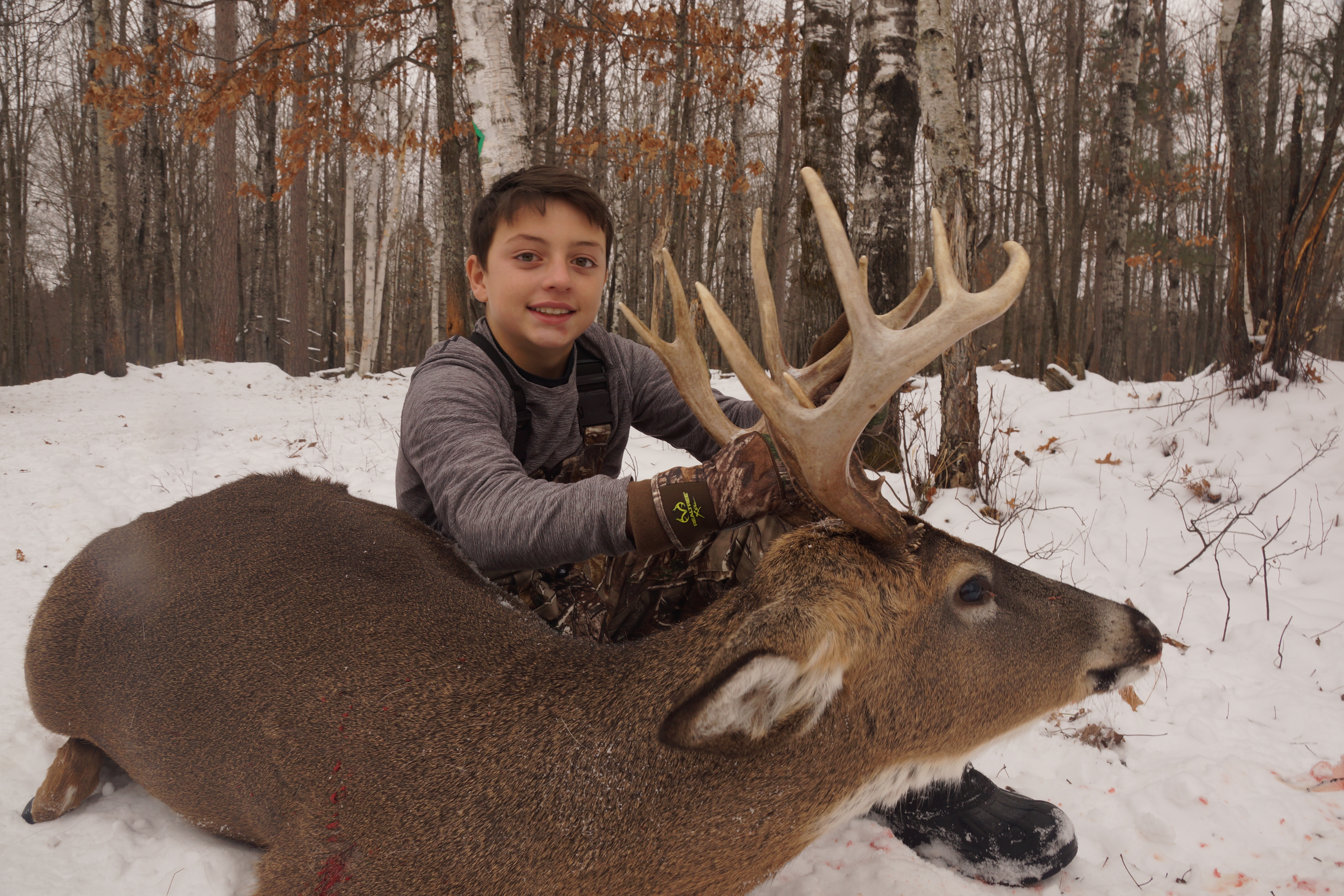
What Is a Guided Deer Hunt?
A guided deer hunt is a professionally organized hunting experience where a licensed outfitter or guide provides support, access, and expertise to help hunters pursue deer successfully. Instead of handling all the scouting, stand placement, and logistics yourself, you rely on a guide who knows the land and deer behavior in that specific area.
Guided hunts are especially valuable for hunters traveling out of state, those new to deer hunting, or anyone who wants to maximize their chances of success. With a guide’s knowledge of terrain, deer patterns, and local regulations, the process becomes more efficient, safe, and enjoyable.
Guided, Semi-Guided, Self-Guided, and DIY: Which Option Fits You?
Hunters have several choices when planning a deer hunt, and the level of guidance you choose depends on your goals, skill level, and budget.
- Guided Hunts: The most hands-on option. A guide accompanies you, selects stand locations, assists with recovery, and often helps with field dressing and transport. Ideal for first-time hunters, those unfamiliar with the region, or hunters with limited time.
- Semi-Guided Hunts: A middle ground. Outfitters provide lodging, property access, and stand locations, but you hunt independently each day. Good for hunters who want some direction while maintaining more independence.
- Self-Guided Hunts: Typically includes land access and basic orientation but leaves scouting and hunting entirely up to you. Best for experienced hunters who want access to quality land but prefer to make their own calls in the field.
- DIY Hunts: You do everything yourself, usually on public land, from scouting to stand setup to processing. This is the most affordable option, but also the most challenging.
What’s Usually Included (and What’s Not) in a Guided Hunt
Guided hunts often come as packages, but the inclusions vary by outfitter. Knowing what is and isn’t part of the hunt helps you plan realistically and avoid surprises.
What’s Commonly Included:
- Access to hunting land (often private property)
- Tree stands, blinds, or other hunting setups
- Transportation in the field (truck, ATV, UTV, etc.)
- Guidance on deer behavior and shot placement
- Tracking, recovery, and basic field dressing
- Lodging and meals (in many packages)
What’s Usually Not Included:
- Hunting licenses and tags
- Airfare or long-distance travel to the outfitter
- Taxidermy and shipping of trophies
- Full meat processing beyond initial field care
- Gratuities for guides and camp staff
Guide-to-Hunter Ratios and Success Rates
Outfitters vary in how many hunters they assign to each guide. Some offer one-on-one hunts, while others use a two-to-one ratio. A lower ratio generally means more attention and higher odds of success. Success rates are another factor, but they can be misleading. Some outfitters advertise “opportunity rates” (chances to take a shot) rather than actual harvest rates. It’s always wise to ask how success is measured before booking.
How a Guided Deer Hunt Works: From Booking to Departure
A guided deer hunt is a process that begins well before you step into the woods. Here’s a typical timeline:
- Booking: Hunters usually reserve their hunt months in advance, especially if aiming for peak rut dates. At this stage, you’ll choose the type of hunt (archery or rifle), the number of days, and lodging preferences. Most outfitters require a deposit to secure your spot.
- Pre-Hunt Preparation: Before arrival, the outfitter provides instructions on licensing, gear, and travel details. Hunters are encouraged to practice with their weapon at realistic shot distances to ensure confidence in the field.
- Arrival Day: Upon arrival, you’ll check into camp or lodging, meet your guide, and review the schedule. Many outfitters also have hunters confirm their rifles are sighted in or test their bows to avoid equipment issues.
- Hunt Days: Each day typically starts early, with guides transporting hunters to stands or blinds before daylight. You’ll spend the morning in the field, return for meals and rest, then head back out in the afternoon. Throughout, guides track deer movement and adjust stand placements or strategies as needed.
- Harvest and Processing: When a deer is taken, guides assist with tracking, recovery, field dressing, and often quartering or cooling the meat. Some outfitters also arrange processing and taxidermy referrals.
- Departure: On the final day, hunters settle any outstanding fees, collect their processed meat or trophies, and prepare for travel home. Guides often provide closing tips or recommendations for future hunts.

Cost Breakdown and Additional Expenses
The cost of a guided deer hunt varies widely depending on location, hunt length, lodging, and trophy expectations. Here’s what to expect:
- Base Hunt Package: Most guided whitetail hunts range from $2,500 to $7,000, with premium trophy hunts priced higher. The base fee usually covers lodging, meals, access to property, and guiding services.
- Deposits: Outfitters typically require a non-refundable deposit, often 25–50% of the total cost, to hold your spot.
- Tags and Licenses: These are almost always the hunter’s responsibility and vary by state. Non-resident licenses can range from $150 to $600 or more.
- Add-Ons: Some outfitters charge additional fees for specific trophy classes, extended stays, airport pickup, or upgraded lodging.
- Processing and Taxidermy: Field dressing may be included, but full meat processing and taxidermy are usually extra. Meat processing runs $100–$300, while taxidermy (for example, a shoulder mount) often costs $500–$1,000 or more. Shipping mounts or meat home can add several hundred dollars.
Knowing these costs in advance helps you budget properly and prevents surprises at the end of your hunt.
Tipping Etiquette for Guides and Camp Staff
Tipping is a standard part of guided hunting trips, and it’s an important way to recognize the hard work that guides and staff put into your experience. While not mandatory, it is customary.
- Guides: A common rule of thumb is 10–15% of the total hunt cost, adjusted up for exceptional service. For example, on a $5,000 hunt, a tip between $500 and $750 is typical.
- Camp Staff: If cooks, cleaners, or other staff contribute to your stay, many hunters budget $50–$100 per staff member.
- Cash: Bring cash in small bills so you can tip appropriately at the end of your hunt.
Ultimately, tipping shows appreciation for the effort that goes into scouting, stand preparation, recovery, and camp hospitality, all the behind-the-scenes work that makes your hunt successful and enjoyable.
High-Fence vs. Free-Range Hunts: Ethics and Success Rates
Hunters often encounter the terms high-fence and free-range when researching guided deer hunts, and understanding the difference is essential.
- High-Fence Hunts take place within large, enclosed properties where deer populations are carefully managed. Outfitters control herd genetics, habitat, and food sources, which often results in higher deer densities and more consistent trophy quality. These hunts typically have higher opportunity and harvest rates, sometimes approaching 100%.
- Free-Range Hunts occur on open land without barriers, where deer roam naturally. Success depends on weather, hunting pressure, food availability, and deer behavior. Opportunity rates are lower than in high-fence environments, and hunts often require more patience, scouting, and adaptability.
- Ethical Considerations: High-fence hunts remain a debated topic. Supporters argue that managed land ensures sustainable herds and excellent hunter experiences. Critics question whether such hunts replicate true wild conditions. Ultimately, the choice comes down to a hunter’s personal ethics, budget, and goals. Asking how an outfitter manages their deer herd is a smart first step in aligning with your own values.
Legalities and Credentials: What to Verify Before Booking
Not all outfitters are created equal, and verifying credentials protects both your safety and your investment. Before booking a guided deer hunt, hunters should confirm:
- Licenses: Ensure the outfitter and guides hold all required state or provincial licenses. Many jurisdictions require outfitters to be registered with local wildlife agencies.
- Insurance: Ask for proof of liability insurance. This safeguards both parties in the event of accidents or property damage.
- Land Access: Confirm that the land you’ll hunt on is legally secured for guiding and outfitting. Some less reputable operations may trespass or use access agreements that aren’t valid.
- Hunting Regulations: Outfitters should be transparent about season dates, bag limits, and legal shooting hours in their area.
A legitimate outfitter will gladly provide documentation and references. If they hesitate or avoid questions about legality and access, consider it a red flag.

How to Vet an Outfitter: 20 Questions to Ask
Booking a guided hunt is a significant investment, and asking the right questions helps avoid disappointment. Here are 20 due-diligence questions every hunter should ask before sending a deposit:
- Are you licensed and insured as an outfitter or guide?
- What is included in the hunt fee, and what costs extra?
- What is your average harvest and opportunity rate over the last three years?
- How do you calculate success rates?
- What is the typical shot distance on your property?
- What caliber or broadhead do you recommend for your terrain?
- How do you handle wounded game, and does it count as a filled tag?
- What is the guide-to-hunter ratio in camp?
- How many hunters do you host per week or per season?
- What type of lodging and meals are provided?
- Can you accommodate dietary or accessibility needs?
- What kind of stands, blinds, or setups do you use?
- Do you provide transportation to and from stands?
- How do you care for harvested deer: cooling, quartering, processing?
- Do you partner with local taxidermists and meat processors?
- What is your deposit, cancellation, and refund policy?
- How do you handle extreme weather or unexpected events?
- Can you provide recent client references, including hunters who didn’t tag out?
- How experienced are your guides, and how long have they worked with you?
- What are your camp rules regarding safety, alcohol, and firearms?
Asking these questions upfront, and listening carefully to how outfitters respond, will help you separate professional operations from those best avoided.
Gear and Fitness Checklist for Guided Hunts
One advantage of a guided hunt is that much of the heavy lifting: scouting, stands, and logistics, is handled for you. Still, hunters should arrive prepared with the right gear and in good condition to handle long days outdoors.
Essential Gear:
- A rifle or bow you are confident with, tuned and sighted in for realistic shot distances
- Ammunition or arrows/broadheads designed for deer-sized game
- Quality hunting clothing in layers, including waterproof outerwear and insulated boots
- Safety harness if tree stands are used
- Binoculars and a rangefinder for accurate distance judgment
- Headlamp with spare batteries
- Day pack with snacks, water, gloves, and handwarmers
Fitness Preparation:
Guided hunts do not always require extreme physical conditioning, but hunters should expect long sits, walking through varied terrain, and sometimes climbing into blinds or stands. Practicing walks in your hunting boots, working on core strength, and improving flexibility can go a long way in making the experience more comfortable.
Frequently Asked Questions
Do I need prior hunting experience?
No. Many outfitters specialize in working with first-time hunters and provide step-by-step guidance.
What is the difference between opportunity rate and harvest rate?
Opportunity rate measures the percentage of hunters who had a chance at a shot, while harvest rate reflects those who successfully tagged a deer.
How long does a typical guided deer hunt last?
Most packages range from three to five days, though some outfitters offer shorter or extended hunts depending on the season.
What happens if I wound a deer but it isn’t recovered?
Many outfitters count a wounded animal as a filled tag, since the deer is unlikely to survive. Always ask about this policy before booking.
When is the best time to book a hunt?
The rut (late October through mid-November in most areas) is the most popular period, but early and late-season hunts also offer great opportunities with less pressure.
Final Thoughts
A guided deer hunt offers hunters the chance to experience the outdoors with expert support, quality access, and a significantly higher chance of success than going it alone. Whether you are new to hunting, traveling from out of state, or simply want to maximize your time in the field, guided hunts provide structure, safety, and knowledge that can turn a trip into an unforgettable experience.
By understanding how guided hunts work, what’s included, how to evaluate success rates, and what questions to ask before booking, you can choose an outfitter that aligns with your goals and expectations. With the right preparation and mindset, a guided deer hunt can deliver not just a trophy animal, but lasting memories of time spent in the field.
Contact Us Today
Ready to experience the hunt of a lifetime? At Forest of Antlers Outfitters, we specialize in trophy whitetail deer hunting trips on over 950 acres of pristine Northwoods habitat. Our guided hunts combine expert knowledge, comfortable lodging, and world-class opportunities to ensure every hunter leaves with unforgettable memories.

